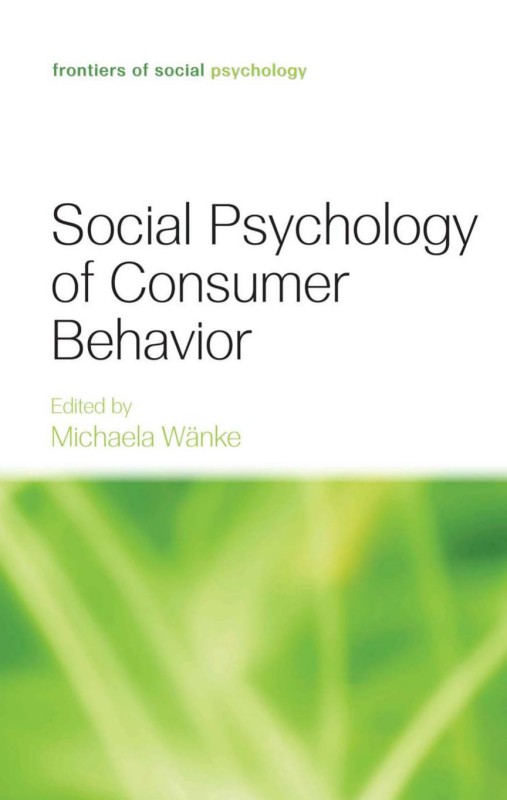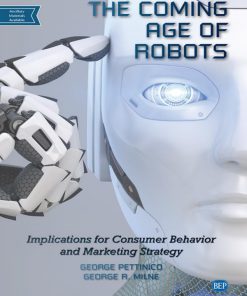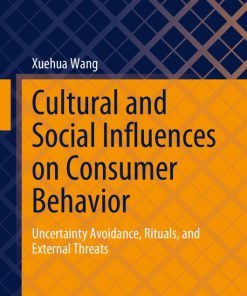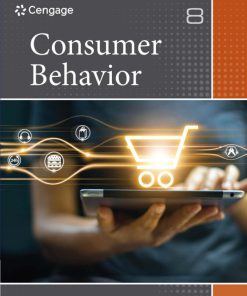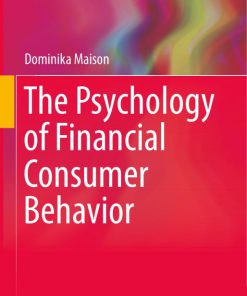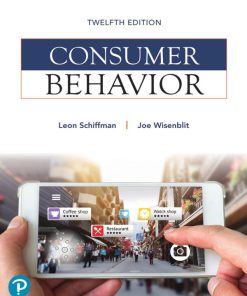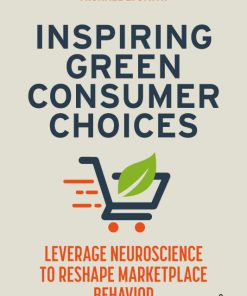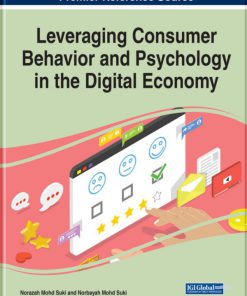Social Psychology of Consumer Behavior 1st Edition by Michaela Wanke 1138882941 9781138882942
$50.00 Original price was: $50.00.$25.00Current price is: $25.00.
Authors:Michaela Wanke , Series:Psychology [164] , Tags:Psychology / General Psychology / Industrial & Organizational Psychology Psychology / Movements / General Psychology / Social Psychology , Author sort:Wanke, Michaela , Languages:Languages:eng , Published:Published:Apr 2009 , Publisher:Psychology Press , Comments:Comments:The Social Psychology of Consumer Behavior brings together the most promising and theoretically fruitful research developments by internationally renowned scholars, whose work is at the cutting edge of research. Experts from both fields – social psychology and consumer behavior – provide an informed, up-to-date overview, from an original integrative perspective.
Social Psychology of Consumer Behavior 1st Edition by Michaela Wanke – Ebook PDF Instant Download/Delivery. 1138882941, 9781138882942
Full download Social Psychology of Consumer Behavior 1st Edition after payment
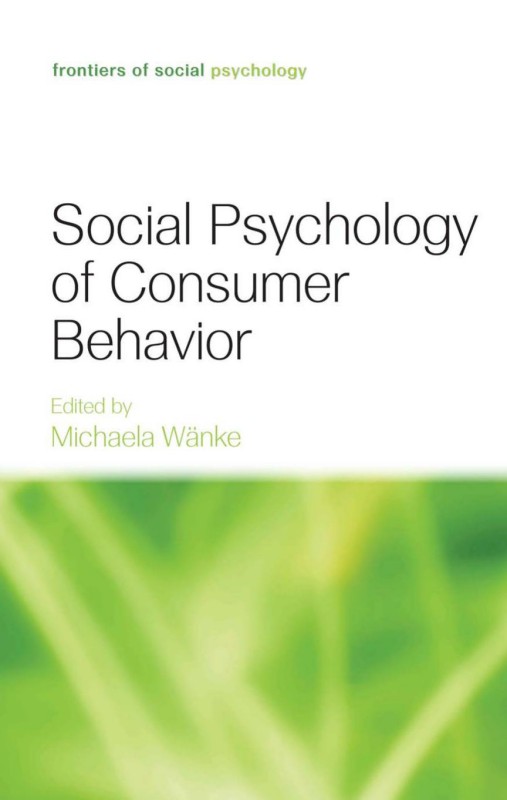
Product details:
ISBN 10: 1138882941
ISBN 13: 9781138882942
Author: Michaela Wanke
The Social Psychology of Consumer Behavior brings together the most promising and theoretically fruitful research developments by internationally renowned scholars, whose work is at the cutting edge of research. Experts from both fields – social psychology and consumer behavior – provide an informed, up-to-date overview, from an original integrative perspective. The aim of this volume is two-fold. On the one hand, the application of social psychology to consumer behavior is meant to broaden the horizon of social psychologists. On the other hand, students and researchers of consumer behavior will be offered an advanced account of relevant theories tailored to their interests. While the range of topics is rather broad – including the construal of judgments and decisions, affective and cognitive feelings, social and media influences, and goals and self-regulation – each chapter is focused on one specific theoretical or methodological perspective and thereby gives a comprehensive and penetrative account of the relevant issues and the respective research. The volume provides an invaluable resource to students, researchers, and instructors in social psychology, consumer psychology, consumer behavior, and marketing.
Social Psychology of Consumer Behavior 1st Table of contents:
Section I Introduction: A Tale of Two Disciplines
1 What’s Social about Consumer Behavior?
SOCIAL PSYCHOLOGY’S ROLE IN STUDYING CONSUMER BEHAVIOR
SOME SOCIAL ASPECTS OF LIVING IN A CONSUMER SOCIETY
Consumer Decisions Are Ubiquitous
Consumer Choices Fulfill a Social-Identity Function
Consumer Choices Affect Social Perception
Affective Consequences of Consumer Behavior
The Consumer Context Provides Unique Social Interactions
Advertising Exposure Shapes Norms and Values
CONCLUSION
OVERVIEW OF THE PRESENT VOLUME
Introduction: A Tale of Two Disciplines
The Construal of Consumer Judgments and Decisions
Affective and Cognitive Feelings in Consumer Judgment
Social and Media Influences on Judgment and Behavior
Goals and Self-Regulation
ENDNOTES
REFERENCES
2 Social Psychology and Consumer Psychology
A HISTORICAL PERSPECTIVE
Advertising in the Nineteenth Century
Advertising at the Turn of the Century
Advertising after World War I
Advertising after World War II
Summary
GENERAL PARADIGMATIC CONCERNS
Two Examples of Paradigmatic Limitations
Representative Concerns of Consumer Research
KNOWLEDGE ACCESSIBILITY
Implications for Consumer Behavior
Implications of Consumer Behavior
Concluding Remarks
ATTITUDES AND ATTITUDE-BEHAVIOR RELATIONS
Alternative Conceptualizations
Implications for Consumer Behavior
Implications of Consumer Research
COMMUNICATION AND PERSUASION
Informational Factors
Individual Differences
Source Effects on Persuasion
Implications for Consumer Behavior Research
Implications of Consumer Behavior Research
AFFECT AND SUBJECTIVE EXPERIENCE
General Considerations
Implications for Consumer Research
Implications of Consumer Research
CONCLUDING REMARKS
ACKNOWLEDGMENTS
ENDNOTES
REFERENCES
Section II The Construal of Consumer Judgments and Decisions
3 Psychological Distance and Consumer Behavior
CONSTRUAL LEVEL THEORY
Level of Construal
Psychological Distance
Psychological Distance and Level of Construal
Primary versus Secondary Sources of Value
Satisfaction and Regret
CONCLUSION
REFERENCES
4 The Rational Unconscious
TWO WAYS TO LOOK AT RATIONALITY
CHOOSING WITHOUT CONSTRAINTS
THE PITFALLS OF CONSCIOUS DELIBERATION, PART 1: HEURISTICS AND BIASES
THE PITFALLS OF CONSCIOUS DELIBERATION PART 2: POOR WEIGHTING
BOUNDED RATIONALITY OR BOUNDED CONSCIOUSNESS?
UNCONSCIOUS THOUGHT
UNCONSCIOUS WEIGHTED ADDING, PART 1: CAPACITY
UNCONSCIOUS WEIGHTED ADDING PART 2: WEIGHTING ITSELF
TOWARD EXPLAINING HOW
CONCLUSIONS
ACKNOWLEDGMENTS
ENDNOTES
REFERENCES
5 Brands and Successful Brand Extensions
BRANDS AS CATEGORIES
ASSIMILATION TOWARD THE EXISTING BRAND— THE INTERPLAY OF FEATURES AND PROCESSES
Similarity of Brand and Product Features
Beyond Feature Similarity: The Role of Categorization Processes
Processing Intensity
Expertise
Regulatory Focus
WHEN BRAND EXTENSIONS FAIL: CONTRAST EFFECTS AS THE WORST-CASE SCENARIOS
THE BIDIRECTIONAL RELATION BETWEEN BRAND AND BRAND EXTENSION: EFFECTS ON THE BRAND
Superior Brand Extensions
Inferior Brand Extensions
PRODUCT-TO-PRODUCT INFLUENCES: HOW AN EXTENSION MAY AFFECT OTHER PRODUCTS
CONCLUSION
ENDNOTES
REFERENCES
6 Compensatory Reasoning in Choice
THE CONCEPT OF COMPENSATION
Self-Regulatory Compensation
Evaluative Compensation
COMPENSATORY PROCESSES IN INFERENTIAL REASONING
Inferential Reasoning in Individual Decision Making
Compensatory Reasoning as an Inferential Process
Compensatory Decision Processes
Domains of Compensatory Reasoning
COMPENSATORY REASONING IN CONSUMER DECISION MAKING
The Market Efficiency Assumption in Compensatory Reasoning
Compensatory Reasoning Effects
BOUNDARIES OF COMPENSATORY REASONING
Assumption of Balance
Availability of Other Bases for Inference
Resource Availability
Information-Processing Strategy
CONCLUSION
REFERENCES
Section III Affective and Cognitive Feelings in Consumer Judgment
7 Conditioning as a Source of Liking
A BRIEF OVERVIEW OF THE LITERATURE
MISCONCEPTIONS OF (EVALUATIVE) CONDITIONING
A CONCEPTUAL ANALYSIS
TOWARD A METACONDITIONAL APPROACH
A Dual Process Model
Implications for Future Research
SUMMARY AND CONCLUSIONS
ACKNOWLEDGMENT
ENDNOTES
REFERENCES
8 The Lexicon and Grammar of Affect as Information in Consumer Decision Making
THE LEXICON OF FEELINGS AS INFORMATION
“How Do I Feel about It?”—Feelings as Information about Value
“How Strongly Do I Feel about It?”—Feelings as Information about the Strength of Preference
“How Scary Does It Feel?”—Feelings as Information about Risk
“How Certain Do I Feel about It?”—Feelings as Information about Conviction
“How Serious Does It Feel?”—Feelings as Information about Situational Demands
“What Would I Feel Better about?” and “What Do I Feel Like Doing?”—Feelings as Motivational Information
THE GRAMMAR OF FEELINGS AS INFORMATION
The Necessity and Sufficiency of Feelings
The Relative Accessibility of Feelings
The Relative Diagnosticity of Feelings
On the Imagery Boundedness of Seeing How It Feels
Query and Response-Mapping Dependency
Situational Engagement of the Affective System
GAIM: A GENERALIZED AFFECT-ASINFORMATION MODEL OF JUDGMENT
ENDNOTES
REFERENCES
9 When Thinking Is Difficult
EASE OF RECALL AND THOUGHT GENERATION: ACCESSIBILITY EXPERIENCES
Content or Experience?
Beyond Judgment: Implications for Choice
Naïve Theories as Inference Rules
Processing Motivation
Summary
THE EASE OF PROCESSING NEW INFORMATION: FLUENCY EXPERIENCES
When It Is Hard to Read, It Is Hard to Do
Seems Like I Heard It Before: Fluency, Familiarity, and the Consequences
Affect, Preference, and Beauty
CODA
REFERENCES
Section IV Social and Media Influences on Judgment and Behavior
10 Cross-Cultural Issues in Consumer Behavior
What Is Culture?
Coverage and Scope
KEY CONSTRUCTS AND DIMENSIONS OF CULTURE
Emerging Cultural Dimensions
CULTURE AND SELF-REGULATORY GOALS
CULTURE, RISK TAKING, AND IMPULSIVITY
CULTURE AND PERSUASIVE APPEALS
Cultural Differences in the Content of Message Appeals
Cultural Differences in Judgment and Persuasion
Cultural Differences in Brand Representations
BRANDS AS SYMBOLS OF SELF AND OF CULTURE
CONCLUSIONS
ACKNOWLEDGMENTS
REFERENCES
11 Television Viewing and Social Reality
CULTIVATION THEORY AND RESEARCH
A SOCIAL COGNITION EXPLANATION OF CULTIVATION EFFECTS
Frequency and Probability Judgments
Television Viewing and Accessibility Bias
Television Viewing and Source Discounting
Heuristic versus Systematic Processing
Values, Attitudes, and Beliefs
Television Viewing and Materialism
Qualifications and Limitations
IMPLICATIONS OF THE PROCESSES UNDERLYING TELEVISION-VIEWING EFFECTS
CONCLUSION
ENDNOTES
REFERENCES
12 Normative Influences on Consumption and Conservation Behaviors
OVERVIEW OF THIS CHAPTER
SOCIAL IDENTITY AND SELFCATEGORIZATION THEORIES
FOCUS THEORY OF NORMATIVE CONDUCT
Differentiating Descriptive and Injunctive Norms
Aligning and Misaligning Norms
A Focus on Focus: The Importance of Focus
SOCIAL NORMS: INFLUENCES ON CONSUMPTION AND CONSERVATION BEHAVIORS
The Effect of Social Norms Marketing Campaigns
The Constructive, Destructive, and Reconstructive Power of Social Norms
Rooms for Improvement: Using Normative Messages in a Hotel Setting
SUMMARY AND CONCLUSION
ENDNOTES
REFERENCES
13 Taking the Target’s Perspective
THE PERSUASION KNOWLEDGE MODEL
Inferring a Persuasion Agent’s Motives
Understanding the Persuasion Agent’s Tactics
Consideration of Persuasion Effectiveness
Consideration of Appropriateness
Inferences of Marketers’ Effort
Consumers’ Coping Responses
Persuasion Knowledge as an Individual Difference Variable
THE PKM AND SOCIAL PSYCHOLOGY
The Target’s Perspective
The Target-Agent Relationship
CONCLUSION
REFERENCES
V Section Goals and Self-Regulation
14 The Persuasive Power of Regulatory Fit
WHAT IS REGULATORY FIT?
THE PERSUASIVENESS OF REGULATORY FIT
MECHANISMS UNDERLYING THE REGULATORY FIT EFFECTS
BOUNDARY CONDITIONS OF THE REGULATORY FIT EFFECT
BEYOND PERSUASION
CONCLUSION
REFERENCES
15 The Impulsive Consumer
IMPLICIT MEASURES
DO IMPLICIT MEASURES PREDICT CONSUMER BEHAVIOR?
CONTROL RESOURCES MODERATE THE PREDICTIVE VALIDITY OF IMPLICIT AND EXPLICIT MEASURES
Processing Time
Cognitive Capacity
Self-Regulatory Resources
Alcohol
Are All Control Moderators Equal?
Situational and Dispositional Moderators
Implications for Applied Contexts
CONCLUSIONS AND OUTLOOK
ACKNOWLEDGMENTS
ENDNOTES
REFERENCES
16 The Dynamics of Self-Regulation
THE DYNAMICS OF SELF-REGULATION
Progress-Based Balancing
Commitment-Based Highlighting
SOURCES OF FEEDBACK FOR SELF-REGULATION
Future Plans as Feedback for Self-Regulation
Mood as Feedback for Self-Regulation
THE DETERMINANT OF THE DYNAMIC OF SELF-REGULATION
The Information That the Perceiver Seeks
The Information in the Goal Actions
CONCLUSIONS
People also search for Social Psychology of Consumer Behavior 1st:
r social hours
social psychology unit 1 quizlet
what is social psychology the study of
the social psychology of clothing symbolic appearances in context
You may also like…
eBook PDF
Consumer Behavior Buying Having Being 13th Edition by Michael Solomon 0135225698 9780135225691
eBook PDF
Consumer Behavior 12th Edition by Leon Schiffman, Joseph Wisenblit ISBN 9780137504503 0137504500

